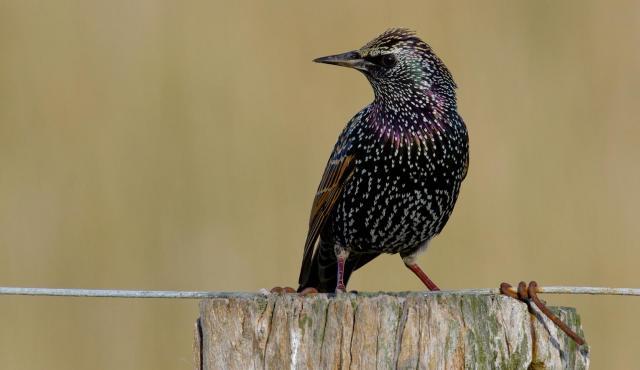
Common Starling
Sturnus vulgaris
| Details | |
|---|---|
| Type | Bird |
| Group | |
| Biology | Breeds August-January. Builds an untidy cup nest in tree hollows, stumps, fence posts, walls and celiings of buildings. Is considered a pest in Australia. Willl readily compete with native bird species for nest sites. Forms large flocks in winter. |
| Distinctive Markings | Glossy black with the appearance of white spots due to the underparts tipped white in autumn. |
| Taxonomy | |
|---|---|
| Phylum | Chordata |
| Class | Aves |
| Order | Passeriformes |
| Family | Sturnidae |
| Genus | Sturnus |
| Species | vulgaris |
Native to Europe, north and west Asia. Now established in Australia throughout south east Queensland, New South Wales, Victoria, Tasmania and southern South Australia.
Source: Atlas of Living Australia
Common Starlings were introduced to Australia from Europe, north and west Asia in the 1860s.
| Interesting Facts | |
|---|---|
| Diet | Omnivore, feeding on invertebrates and seeds in paddocks and on lawns. Also eats human scraps and fruit crops. |
| Habitat | Urban areas, agricultural areas near towns. Also open woodlands, watercourses, gardens and orchards. |
| Native Status | Introduced |